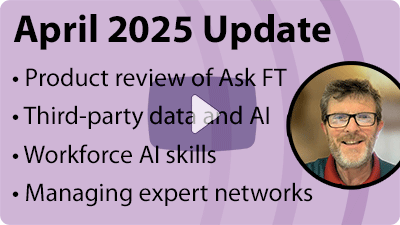 Arm Yourself with Sales 2.0 Intelligence Tools
Arm Yourself with Sales 2.0 Intelligence Tools
Jinfo Blog
21st June 2013
By Michael Levy
Abstract
Sales intelligence services have evolved rapidly over the past few years. Traditional sales tools were general business information databases that supported list building, but they have matured into powerful information services with richer workflow functionality around companies, executives, and industries. The leading Sales 2.0 services support workflow integration into CRMs and help sales reps target who to call, when to call, and what to say.
Item
Over the past few years, a term called Sales 2.0 has sprung up to describe changes in the B2B sales environment. Sales 2.0 is not a single technology or process, but a recognition that the web has changed information availability, processes, and relationships. Buyers are much better informed than they were a decade ago. Not only can they identify potential solutions more easily, but they often conduct preliminary research and winnow the solutions list before ever discussing requirements with a sales rep. According to the Corporate Executive Board, 57% of the buying process is completed before buyers even contact a company.
Sales reps no longer have the ability to control information and sales processes, nor can they enter a conversation under a veil of ignorance. Therefore, B2B sales reps need sales intelligence tools to help rebalance the relationship between buyers and sellers. If buyers are armed with information from websites, trade publications, social media, and multimedia, then sellers need to catch up in this information arms race.
They can start with the free web, but the internet is a cacophony which does a poor job of helping sales reps identify who to call, when to call, and what to say. Sales 2.0 tools help filter this noise through intelligent aggregation, semantic tagging, and personalisation and then deliver sales insights through web browsers, mobile devices, and CRM integration.
The term Sales 2.0 is a bit of a catch-all and includes predictive analytics firms such as Mintigo, LeadSpace, and Lattice Engines; sales playbooks from vendors such as Qvidian and Savo; connection discovery from LinkedIn Sales Navigator; and sales intelligence services from Hoover’s, InsideView, OneSource, and Bureau van Dijk (BvD).
The core content and functionality of the Sales 1.0 Intelligence Services was in place by 2003. These services were general purpose information resources that helped build prospecting lists, perform quick qualification, conduct background research, and identify other locations at a firm; but they were walled garden content services that didn’t tie into CRMs or leverage the open web very well.
Sales 2.0 services answer the questions, “Who to call, when to call, and what to say.” While information sets such as people lists and biographies have long been available in sales intelligence services, it is the aggregation of this content from disparate sources and the integration of this content into a single-view, cross-platform, workflow solution that differentiates Sales 2.0 services from first generation tools.
FreePint Subscribers can log in to find out more by reading Michael's article Sales Intelligence Comes of Age with Sales 2.0.
- Blog post title: Arm Yourself with Sales 2.0 Intelligence Tools
- Link to this page
- View printable version
- Product Review of D&B360: Executive Summary
Friday, 31st May 2013 - BvD Mint: Introduction and FreePint's View
Monday, 22nd October 2012
- The Power of Business Analysis Tools for Competitive Intelligence
Wednesday, 5th June 2013 - Big Data Gets Sociable
Friday, 10th May 2013 - Improving the Sales Process with InsideView
Friday, 19th April 2013 - Sales prospecting with event triggers: iSell review
Tuesday, 24th July 2012
Vendor adoption of AI
Community session
23rd May 2024
AI prompting and AI-sourcing, US private companies, and Jinfo on YouTube
Blog posting
10th April 2024
April 2024 Update
YouTube video
10th April 2024
- AI prompting and AI-sourcing, US private companies, and Jinfo on YouTube
10th April 2024 - AI practical actions, prompting and outsourcing
6th March 2024 - GenAI and ESG wisdom of the Jinfo crowd
13th February 2024
- Jinfo Community session (TBC) (Community) 20th June 2024
- Vendor adoption of AI (Community) 23rd May 2024
- Offshore, outsource or AI-source? (Community) 16th April 2024

